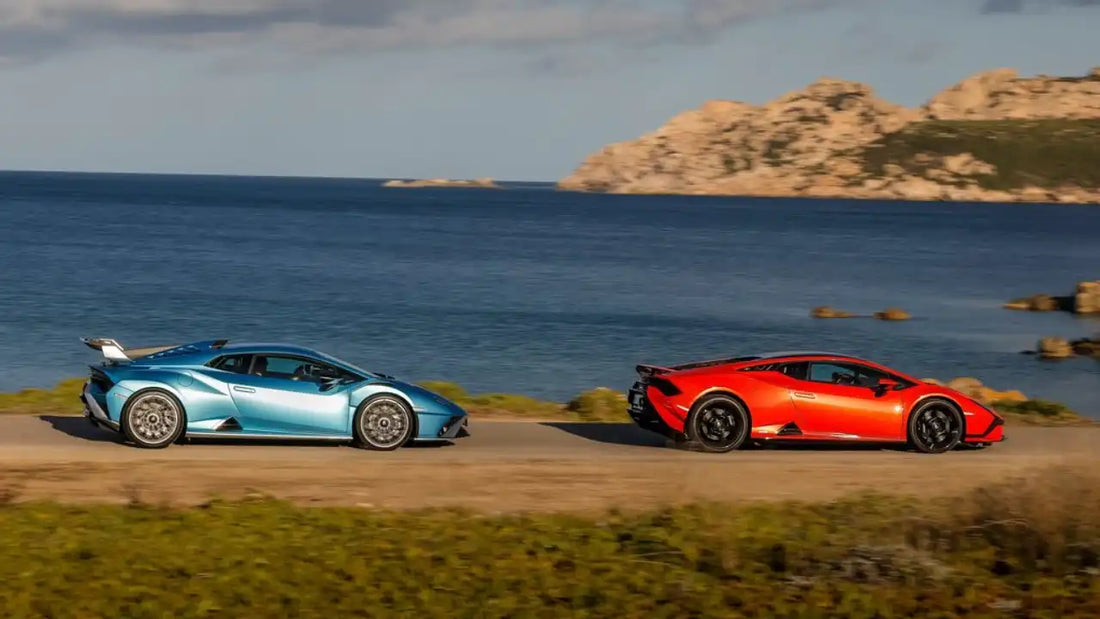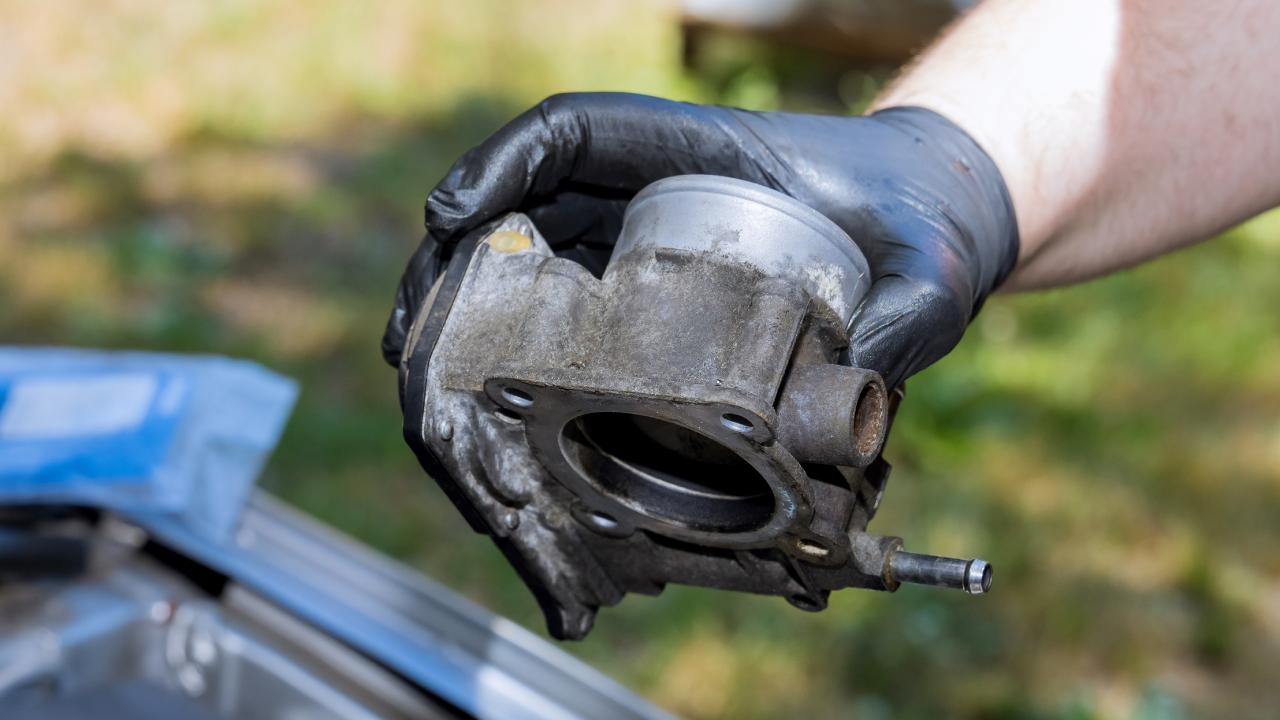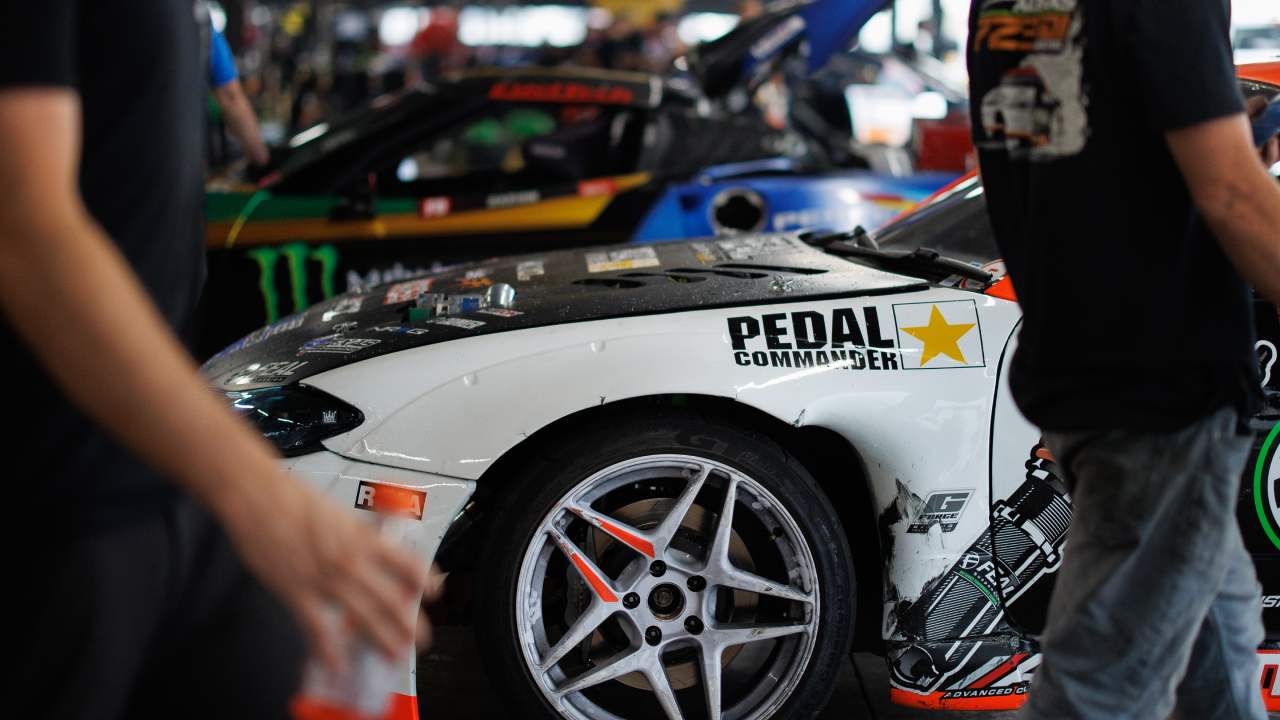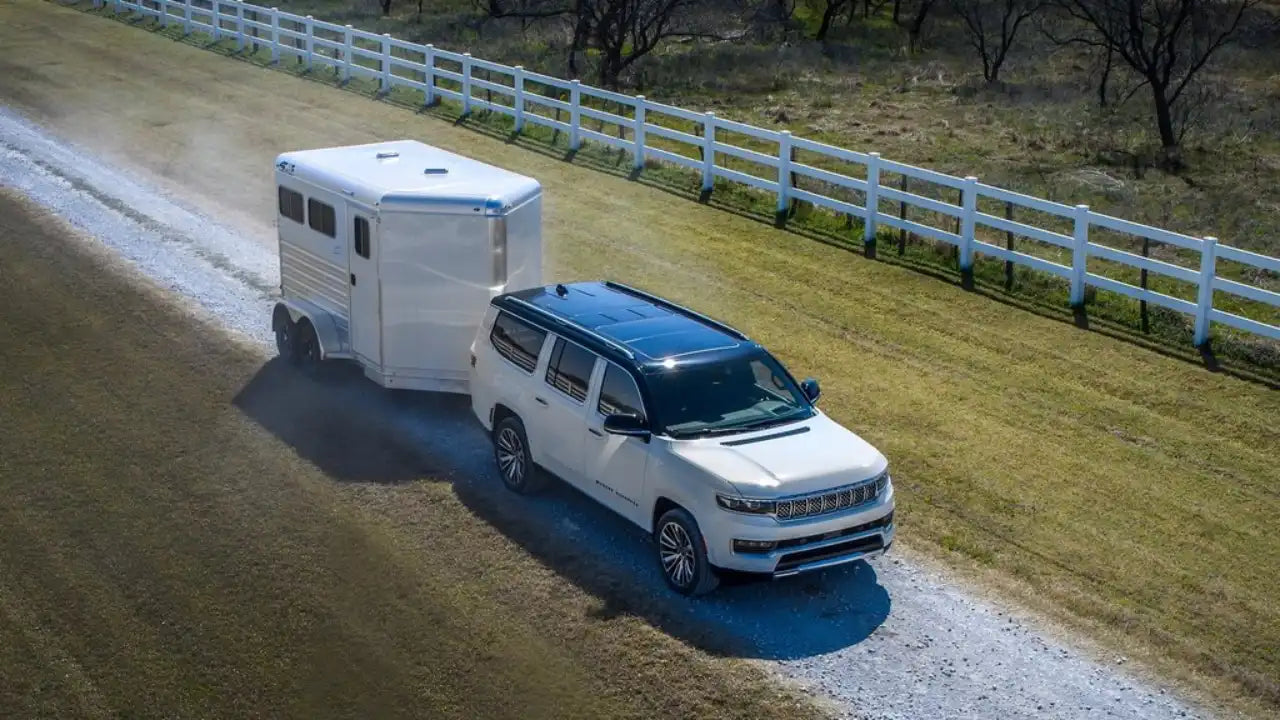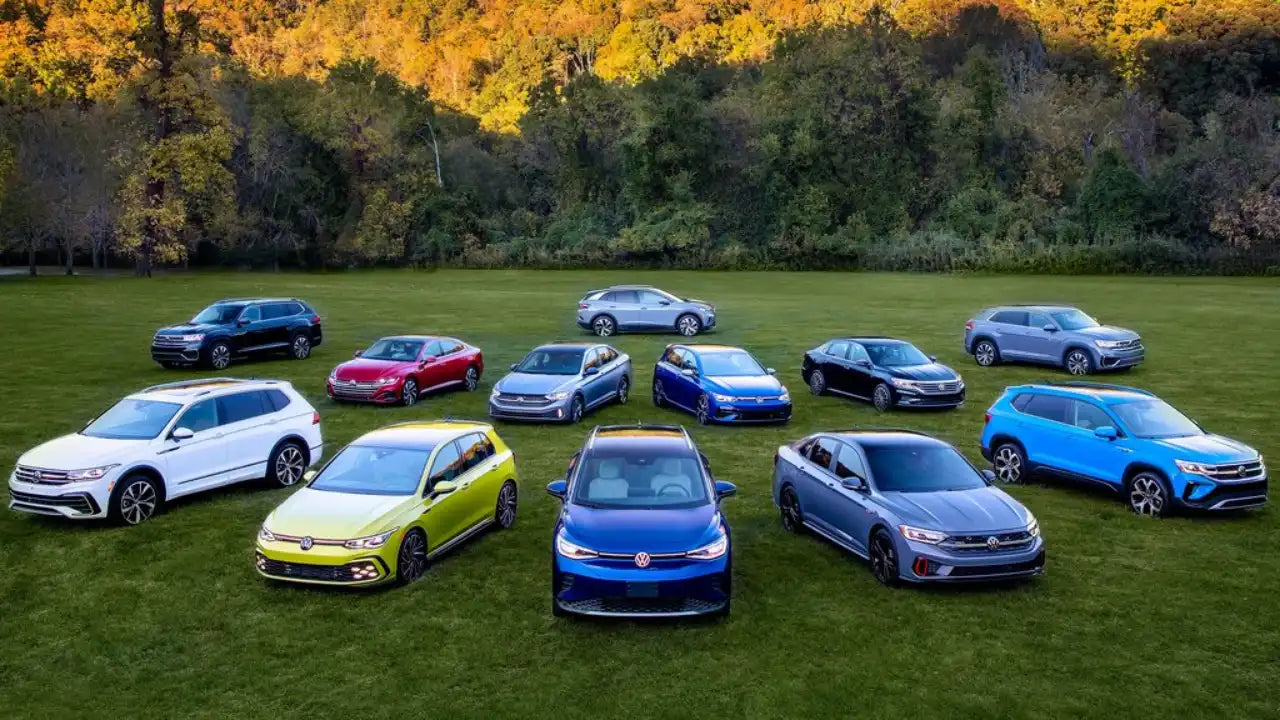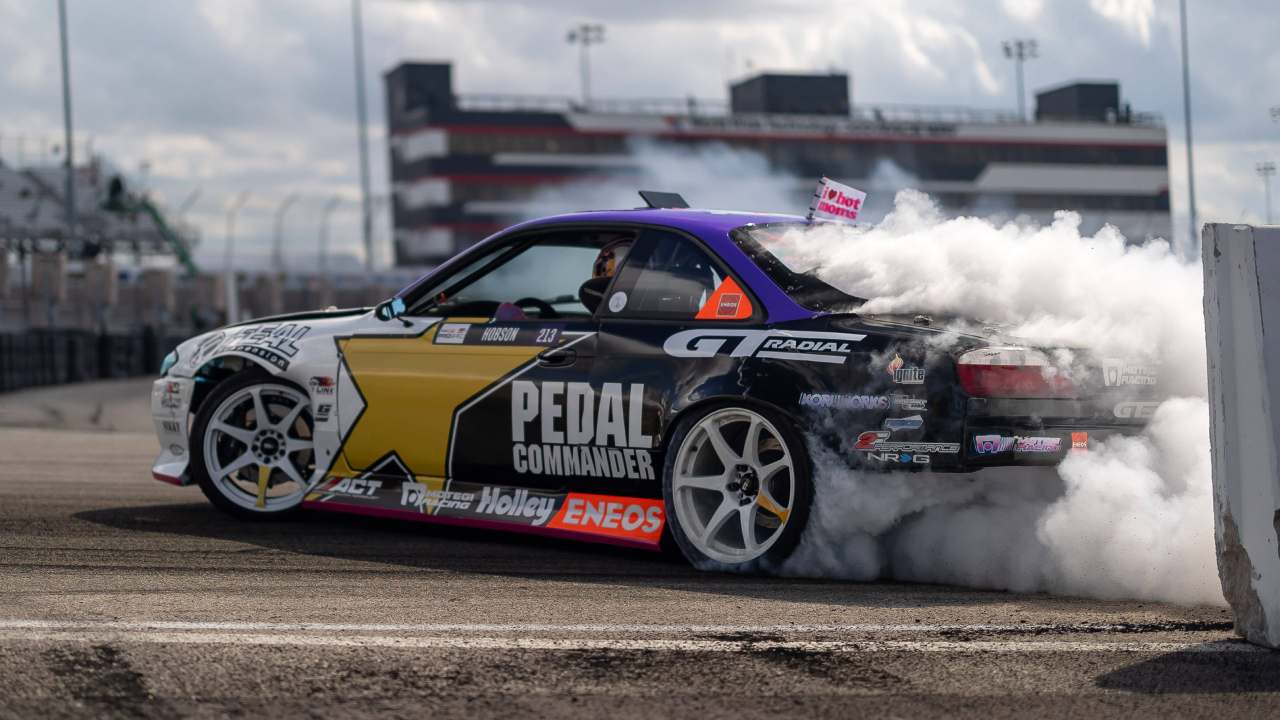The Fascinating Evolution of Supercars: Unveiling Automotive Advancements Through the Years
Cansu ErdalShare
What are supercars? Supercars are designed to push the boundaries of what’s possible in terms of speed, aerodynamics, and overall performance, and they often serve as showcases for the latest automotive innovations. Due to their exclusivity, advanced engineering, and high price tags, supercars are typically produced in limited quantities and are coveted by enthusiasts, collectors, and automotive connoisseurs around the world. From their early beginnings to the mind-bending marvels of today, the evolution of supercars reflects the relentless pursuit of automotive excellence.

In this blog post, we will talk about everything about supercars, from v8 supercars and cheap supercars to electric supercars and the best supercars list. If you want to discover the answers to frequently asked questions about supercars, all you need to do is read this blog post till the end. Even though you know everything about supercars, we are sure to surprise you. This is because we will share the secret of making supercars more super.
Demystifying the Manual Transmission Aspect of Supercars
No, not all supercars are manual. While manual transmissions were more common in supercars in the past, many modern supercars are equipped with automatic or semi-automatic transmissions, often with paddle shifters. Some manufacturers still offer manual transmissions in select models for enthusiasts who prefer the traditional driving experience and greater control over gear selection. However, the choice between manual and automatic transmissions largely depends on the preferences of the car manufacturer and the target market for the specific supercar model.

Are hybrid and electric supercars better than gasoline supercars?
Whether hybrid and electric supercars are “better” than gasoline supercars depends on some criteria. Each type of supercar has its own set of advantages and disadvantages. Let’s look at them below:

Unlock the Benefits of Gasoline-Powered Supercars for Optimal Performance
- Performance Legacy: Gasoline supercars have a rich history of high-performance engineering and have been refined over many decades. They offer a visceral and exhilarating driving experience.
- Longer Range: Gasoline-powered supercars typically have a longer driving range compared to electric or hybrid counterparts, making them suitable for long-distance travel.
- Quick Refueling: Refueling a gasoline supercar is quick and convenient, especially when compared to the charging time of electric vehicles.
- Established Infrastructure: Gasoline refueling infrastructure is well-established globally, providing easy access for owners.
The Disadvantages of Gasoline Supercars
- Emissions: Gasoline supercars produce higher emissions compared to hybrid and electric models, contributing to air pollution and greenhouse gas emissions.
- Higher Operating Costs: Gasoline can be more expensive than electricity, and high-performance engines may require more maintenance.
- Dependency on Fossil Fuels: Gasoline supercars rely on fossil fuels, which are finite resources and contribute to environmental concerns.
The Advantages of Hybrid Supercars
- Improved Fuel Efficiency: Hybrids combine an internal combustion engine with an electric motor, allowing for better fuel efficiency and reduced emissions compared to pure gasoline-powered supercars.
- Regenerative Braking: Hybrids can recover and store energy during braking, which can increase overall efficiency and extend the range.
- Instant Torque: Electric motors provide instant torque, which can enhance acceleration and performance.
- Reduced Emissions: Hybrid systems produce fewer emissions compared to traditional gasoline engines, particularly during low-speed driving.
The Disadvantages of Hybrid Supercars
- Complexity: Hybrid drivetrains are more complex than traditional gasoline engines, which can lead to higher maintenance costs and potential reliability issues.
- Weight: The addition of electric components can increase the overall weight of the vehicle, potentially impacting handling and performance.
The Advantages of Electric Supercars
- Zero Emissions: Electric supercars produce zero tailpipe emissions, making them environmentally friendly and reducing air pollution.
- Instant Torque: Like hybrids, electric motors provide instant torque, resulting in quick and powerful acceleration.
- Lower Operating Costs: Electric cars have lower operating costs due to lower fueling costs and fewer maintenance requirements (fewer moving parts).
- Quieter Operation: Electric motors operate quietly, providing a more serene driving experience compared to internal combustion engines.
The Disadvantages of Electric Supercars
- Limited Range: Electric supercars typically have limited driving range compared to gasoline-powered cars, which can be a consideration for long-distance travel.
- Charging Infrastructure: The availability of charging stations, especially high-speed chargers, may vary by region and could potentially affect the convenience of owning an electric supercar.
- Charging Time: While charging technology is improving, it can still take longer to charge an electric supercar compared to refueling a gasoline-powered one.
As you can see, hybrid and electric supercars offer distinct advantages over gasoline counterparts. They excel in environmental impact, producing fewer or zero emissions, which is crucial for sustainability. Electric powertrains provide instantaneous torque, enhancing acceleration and performance. Additionally, they tend to have lower operating costs due to reduced reliance on fossil fuels and simpler maintenance. However, gasoline supercars boast a legacy of performance, longer driving ranges, and a well-established refueling infrastructure.
What are abandoned supercars in Dubai?
Abandoned supercars in Dubai refer to high-end luxury and sports cars that have been left in various states of disrepair or abandonment in the city of Dubai, United Arab Emirates. Dubai has gained a reputation for being a hub for luxury cars, with a significant number of high-end vehicles on its roads. Let’s talk about several reasons why cool supercars might end up abandoned in Dubai:
- Financial Troubles: Some owners might face financial difficulties and find themselves unable to maintain or retrieve their expensive cars. This could be due to business failures, job losses, or other personal financial crises.
- Legal Issues: In some cases, owners might abandon their cars due to legal troubles, such as unpaid fines, outstanding debts, or issues with the vehicle's paperwork.
- Expatriate Exits: Dubai is home to a large expatriate population, and when people leave the country suddenly (for various reasons like job loss, deportation, or other personal issues), they might abandon their possessions, including their cars.
- Impulse Purchases: Some individuals may buy high-end cars on impulse without considering the long-term costs associated with maintenance, insurance, and other expenses. When faced with these costs, they may choose to abandon the car.
- Customs and Duties: Dubai has strict regulations regarding the import and export of cars. If a car owner encounters difficulties with customs or duties, they might decide to abandon the vehicle.
- Change in Economic Situation: Economic fluctuations or changes in personal wealth can influence an owner's decision to abandon a supercar. They might find that selling the car is not as profitable as they had hoped.
- Natural Disasters and Accidents: Sometimes, natural disasters or accidents can lead to cars being abandoned. For example, if a car is damaged in a flood or a fire, the owner might choose not to repair it.
- Speculative Investments: Some individuals may have bought high-end cars as speculative investments, hoping that their value would appreciate over time. If this doesn't happen, they might abandon the car.

It's worth noting that the Dubai government has implemented measures to address the issue of abandoned vehicles, such as impounding and auctioning them off if the owner cannot be located.
Is there a difference between Supercars and Sports cars?
Yes. While sports cars provide an exciting level of handling and precision, supercars take things to the next level with even quicker acceleration times and higher top speeds. Supercars are high-performance vehicles engineered to achieve extreme levels of speed, acceleration, and handling. They often incorporate cutting-edge technology, exotic materials, and aerodynamic designs. Examples of renowned supercar manufacturers include Ferrari, Lamborghini, Bugatti, McLaren, and Koenigsegg. Supercars tend to be produced in limited quantities, making them exclusive and accompanied by premium price tags.
Sports cars, on the other hand, also prioritize performance but generally at a slightly lower level compared to supercars. They strike a balance between speed, agility, and handling. Sports cars come in a wider range of prices, from relatively affordable models to high-end luxury options. Manufacturers like Porsche, Chevrolet, Mazda, and Subaru are well-known for producing sports cars. They are designed to cater to various driving preferences, offering options for nimble and responsive handling as well as more comfortable and refined driving experiences.

As you can see, while both supercars and sports cars are designed for high-performance driving, supercars excel in achieving extreme levels of speed and performance, often with limited production runs and high price tags. Sports cars, while still high-performance vehicles; offer a wider range of options in terms of price, driving styles, and practicality for everyday use.
What is V8 supercars?
V8 Supercars refers to a premier touring car racing series based in Australia, now known as the Repco Supercars Championship. V8 Supercars showcases highly modified, production-based sedan cars designed for intense competition on various tracks and street circuits. It has gained a significant fan base both domestically and internationally.
Initially, the name “V8” indicated the type of engine utilized in the cars, which was a naturally aspirated 5.0-liter V8. This designation emphasized the distinctive characteristic of the championship - the use of powerful, high-displacement engines that generated impressive horsepower figures. However, over time, the series underwent changes to its technical regulations, allowing for greater flexibility in the choice of engines. This led to the inclusion of turbocharged V6 engines, reflecting the evolving landscape of automotive technology and engineering.

Thus, the Repco Supercars Championship, in other words, V8 supercars, is celebrated for its fiercely competitive racing, characterized by close wheel-to-wheel battles, strategic maneuvers, and skilled driving. The drivers who participate in the championship are among the best in the world, and many have gained international recognition for their talents. The championship has produced legendary figures in Australian motorsport, with names like Peter Brock, Mark Skaife, Craig Lowndes, and Jamie Whincup becoming synonymous with the sport.
Are F1 cars faster than supercars?
Yes, Formula 1 cars are generally faster than supercars in terms of top speed and acceleration on a race track. Here are some key factors that contribute to the superior speed of Formula 1 cars:
- Power-to-Weight Ratio: Formula 1 cars have an incredibly high power-to-weight ratio. They are lightweight and have powerful engines, which means they can accelerate very quickly.
- Aerodynamics: F1 cars are designed with highly advanced aerodynamics to generate significant downforce. This allows them to maintain high speeds through corners, providing better grip and stability.
- Tire Technology: Formula 1 cars use specially designed tires that provide exceptional grip and traction. These tires are engineered for high-speed racing and can handle extreme forces.
- Advanced Engineering: F1 cars are at the cutting edge of automotive technology. They incorporate materials and technologies that are often more advanced than those used in production supercars.
- Race-Specific Design: F1 cars are purpose-built for racing on tracks. They are optimized for high-speed performance, handling, and agility on closed circuits.
- Track Conditions: F1 circuits are specially designed for high-speed racing. They are typically smoother and more optimized for fast driving compared to regular roads.
- Professional Drivers: Formula 1 drivers are among the best in the world, and they have extensive training and experience in handling these high-performance machines at extreme speeds.

On the other hand, supercars are designed to be high-performance road cars that can be driven on regular streets. While supercars are extremely fast and powerful compared to most production cars, they are not engineered to the same level of performance as Formula 1 cars. Additionally, they are designed to provide comfort, luxury, and drivability for everyday use, which is not a priority for F1 cars.
In terms of top speed, Formula 1 cars typically have lower top speeds compared to some of the fastest-production supercars. However, they make up for it with their exceptional acceleration, cornering speeds, and agility on the track.
Old Supercars vs. New Supercars
Comparing old supercars to new supercars involves considering various factors like performance, technology, design, and overall appeal. Here is a breakdown of the key aspects for each category:
Old Supercars
- Performance: Older supercars were often characterized by their powerful engines and impressive top speeds for their time. However, by modern standards, they may be outperformed in terms of acceleration, handling, and overall performance.
- Technology: Older supercars lacked many of the advanced technologies found in modern vehicles. They often relied on mechanical engineering and basic electronic systems, without features like advanced driver-assistance systems (ADAS) or infotainment.
- Design: Old supercars are often celebrated for their classic and timeless designs. They may feature distinct design elements like pop-up headlights, bold lines, and iconic silhouettes that are emblematic of their era.
- Collectibility: Many old supercars have become highly sought after by collectors, with some models appreciating significantly in value over the years due to their limited production numbers and historical significance.
New Supercars
- Performance: Modern new supercars have reached unprecedented levels of performance. They benefit from advanced materials, aerodynamics, and powerful engines combined with sophisticated electronic systems for handling, traction control, and driver assistance.
- Technology: Modern new supercars are equipped with cutting-edge technology, including advanced driver-assistance systems, adaptive suspension, hybrid powertrains, and state-of-the-art infotainment systems. Some even feature semi-autonomous driving capabilities.
- Design: Modern new supercars exhibit a blend of aerodynamic efficiency and aesthetic appeal. They often incorporate advanced materials like carbon fiber for lightweight construction, and their designs are influenced by computational fluid dynamics for optimal airflow.
- Sustainability: With increasing concerns about environmental impact, many modern new supercars are moving towards hybrid or fully electric powertrains. This not only enhances performance but also reduces emissions.
As you can see, old supercars hold a special place in automotive history for their raw mechanical prowess and iconic designs. They represent a different era in automotive engineering where simplicity and brute force were often the order of the day. On the other hand, new supercars showcase the pinnacle of technological advancement in the automotive industry. They offer unmatched performance, cutting-edge features, and a focus on sustainability, reflecting the changing priorities and values in the automotive world.
Thus, some enthusiasts may be drawn to the nostalgia and character of older models, while others may be captivated by the sheer technological marvel and performance capabilities of the latest offerings. Let’s look at some popular models of 90s supercars and future supercars below:
90s Supercars:
McLaren F1 (1992-1998)
The McLaren F1 is often regarded as one of the greatest supercars of all time. It featured a central driving position, a naturally aspirated BMW V12 engine, and a top speed record that stood for over a decade.

Bugatti EB110 (1991-1995)
The EB110 was an Italian-French supercar, named after Ettore Bugatti and the 110th anniversary of his birth. It was known for its quad-turbocharged V12 engine and advanced technology. It was a rare and highly sought-after 90s supercar.

Ferrari F50 (1995-1997)
The Ferrari F50 was a limited-production supercar with a naturally aspirated V12 engine derived from Formula One technology. It was known for its striking design and exceptional performance.

Potential Future Supercars:
Audi R8 Coupe V10 GT RWD
This is a powerful mid-engine supercar known for its distinctive design and exceptional performance. It is equipped with a 5.2-liter naturally aspirated V10 engine, producing impressive horsepower and torque figures. The R8 offers advanced Quattro all-wheel drive and a refined interior, making it a blend of high performance and daily drivability.

Lamborghini Huracan Sterrato
Unleashing a new era of supercar excellence, the 2024 Lamborghini Huracan Sterrato is a true marvel of automotive engineering. It has a magnificent 5.2-liter naturally aspirated V10 engine, a masterpiece of automotive powerhouses. With a relentless 640 horsepower coursing through its veins, this powerhouse propels the Sterrato to unimaginable speeds, ensuring every journey is an adrenaline-fueled symphony of precision and performance.

Porsche Mission X Concept
It emerges as a pioneering force in the realm of supercars, embodying Porsche's relentless pursuit of innovation. This visionary electric marvel transcends conventions, ushering in a new era of performance and sustainability. With its sleek, aerodynamic design and state-of-the-art electric powertrain, the Mission X Concept promises an exhilarating fusion of precision engineering and lightning-fast acceleration. Also, it has an impressive total power output, potentially exceeding 800 to 1000 horsepower or more. This would likely result in breathtaking acceleration and top-tier speeds.

Supercars vs. Hypercars
Supercars and hypercars are distinct categories of high-performance vehicles, differing primarily in terms of performance, technology, production volume, and price. Here is a breakdown of the key differences:
- Performance: Supercars are extremely fast and powerful cars, capable of achieving top speeds well above the average car. They often have impressive acceleration and handling capabilities.
- Technology: Supercars incorporate advanced technology in terms of engines, aerodynamics, and materials. They often feature lightweight materials like carbon fiber to enhance performance.
- Production Volume: While production numbers can vary, supercars are typically produced in higher quantities compared to hypercars. Some popular supercar models may have annual production runs in the hundreds or even thousands.
- Price Range: Supercars are expensive but relatively more accessible than hypercars. They can range from hundreds of thousands to a few million dollars.
- Brands: Both supercars and hypercars are typically manufactured by the most prestigious and exclusive automakers like Ferrari, Lamborghini, McLaren, Porsche, Aston Martin, Bugatti, Koenigsegg, Pagani and Rimac.

Thus, while both supercars and hypercars are extraordinary vehicles, hypercars represent the absolute zenith of automotive engineering and performance. Hypercars are the most exclusive, technologically advanced, and expensive cars you can find. On the other hand, supercars are still exceptionally high-performance vehicles but are produced in larger quantities and are comparatively more accessible in terms of pricing.
What are the most iconic brands of supercars?
In the realm of automotive excellence, a select few names emerge as luminaries, synonymous with speed, luxury, and cutting-edge engineering. These are the iconic brands of supercars, revered for their unparalleled performance, innovative design, and a legacy that spans generations. Here are some of the most iconic supercar brands:
Ferrari
- Past: Founded in 1947 by Enzo Ferrari, the company has a rich history in motorsport. They have produced legendary models like the Ferrari 250 GTO and the F40, which are revered for their performance and design.
- Today: Ferrari continues to be a leading name in the supercar world. Their current lineup includes models like the 812 Superfast, F8 Tributo, and the SF90 Stradale, which utilize cutting-edge technology and materials for blistering performance.
Lamborghini
- Past: Founded in 1963, Lamborghini gained fame for pushing boundaries with supercar models like the Miura and the Countach, which were known for their aggressive styling and powerful engines.
- Today: Lamborghini's current supercar lineup includes the Aventador and the Huracán, which feature advanced aerodynamics and performance enhancements. The brand also delves into the world of hybrid technology with models like the Sián.
Porsche
- Past: Porsche, established in 1931, initially focused on sports cars. The Porsche 911, introduced in the 1960s, became an iconic supercar for its distinctive rear-engine layout and timeless design.
- Today: The 911 remains a cornerstone of the brand, alongside newer models like the 718 Cayman and Boxster. Porsche also entered the electric supercar arena with the Taycan, showcasing their commitment to cutting-edge technology.
Bugatti
- Past: Bugatti has a storied history, with the Type 35 being one of the most successful race cars ever made. In the 1990s, the EB110 showcased advanced engineering for its time.
- Today: The Chiron and Divo represent Bugatti's modern offerings, known for their jaw-dropping top speeds and luxurious interiors. They've also been at the forefront of pushing the limits of what's possible in terms of speed and performance.
McLaren
- Past: McLaren has a distinguished motorsport heritage, with the McLaren F1 from the 1990s being a standout icon for its central driving position, performance and supercar features.
- Today: McLaren's modern lineup includes models like the 720S, which incorporate lightweight construction and advanced aerodynamics. They've also ventured into the hybrid supercar market with the Speedtail and Artura.
Aston Martin
- Past: Aston Martin has been producing luxury sports cars and supercars since 1913. Iconic models like the DB5 gained worldwide recognition through James Bond films.
- Today: While Aston Martin isn't exclusively focused on supercars, models like the Valkyrie and Valhalla demonstrate their commitment to high-performance engineering and cutting-edge technology.
Koenigsegg
- Past: Founded in the late 1990s, Koenigsegg is a relatively new entrant. The CCX and Agera supercar models gained attention for their record-breaking performance.
- Today: Koenigsegg continues to push boundaries with supercar models like the Jesko and Gemera, known for their extreme power figures and innovative engineering solutions.
Pagani
- Past: Pagani, established in the late 1990s, is known for its limited-production hypercars like the Zonda and Huayra, which blend artistry with performance.
- Today: Pagani's latest offerings, like the Huayra Roadster and Huayra Roadster BC, maintain the brand's tradition of handcrafted, bespoke hypercars with exceptional attention to detail.
What are the best supercars?
When it comes to the pinnacle of automotive engineering and performance, supercars stand at the forefront, representing the zenith of speed, technology, and design. These extraordinary vehicles push the boundaries of what's possible on four wheels, combining cutting-edge technology with stunning aesthetics. Here is the best supercars list:
Bugatti Chiron Super Sport 300+
The Bugatti Chiron Super Sport 300+ is a limited-edition hypercar produced by the French automaker Bugatti. It was introduced as a high-performance variant of the Bugatti Chiron, one of the world's fastest production cars. Here are some key features and specifications of the Bugatti Chiron Super Sport 300+:
- Top Speed: The "300+" in its name refers to its top speed in miles per hour. The Chiron Super Sport 300+ is the first production car to break the 300 mph barrier, with an official top speed of 304.773 mph (490.484 km/h). This record was achieved in 2019.
- Engine: It is powered by an 8.0-liter quad-turbocharged W16 engine that produces a staggering 1,578 horsepower.
- Performance: The powertrain allows the Chiron Super Sport 300+ to accelerate from 0 to 60 mph in under 2.5 seconds.
- Aerodynamics: The Super Sport 300+ features aerodynamic enhancements compared to the standard Chiron, which are critical for achieving such high speeds.
- Limited Production: Bugatti only produced a very limited number of the Chiron Super Sport 300+, and it's considered a collector's item. Production was capped at 30 units.
- Price: The Chiron Super Sport 300+ is an extremely expensive car, with a multi-million-dollar price tag.

McLaren Artura
The McLaren Artura is a hybrid supercar produced by the British automaker McLaren Automotive. It combines McLaren's expertise in high-performance engineering with hybrid technology to create a vehicle that delivers both impressive power and improved efficiency. Here are some key features and specifications of the McLaren Artura:
- Powertrain: Hybrid powertrain with a twin-turbocharged V6 engine combined with an electric motor.
- Performance: Approximately 680 horsepower, 0-60 mph in just over 3 seconds, top speed of around 205 mph.
- Electric-Only Mode: Capable of driving short distances in electric-only mode.
- Battery and Range: Equipped with a lithium-ion battery pack, providing a short electric-only range. Chargeable through regenerative braking and external sources.
- Chassis and Suspension: Lightweight carbon-fiber monocoque chassis, advanced suspension system with double-wishbone setup.
- Price: Positioned as a high-end supercar in the luxury automotive market.

Ferrari SF90 Spider
The Ferrari SF90 Spider is an Italian hybrid car. In every aspect, the Ferrari SF90 Spider sets a new standard for supercars, showcasing Ferrari’s relentless pursuit of perfection and innovation. Here are some key features and specifications of the Ferrari SF90 Spider:
- Hybrid Powertrain: Equipped with a hybrid system, it combines a 4.0-liter twin-turbocharged V8 engine with three electric motors, delivering a staggering total power output of 986 horsepower.
- Electric Mode: It can operate in full-electric mode for short distances, showcasing Ferrari's commitment to hybrid technology.
- Aerodynamics: Designed with a keen focus on aerodynamics, it incorporates active elements to optimize downforce and minimize drag.
- Advanced Driver Assistance Systems (ADAS): The SF90 Spider is equipped with a range of advanced driver assistance features, making it one of Ferrari's most technologically advanced models.
- Limited Production: Reflecting its exclusivity, the SF90 Spider is produced in limited numbers, adding to its collector's appeal.
- Price: The Ferrari SF90 Spider falls into the category of ultra-high-performance hybrid supercars.

Pagani Huayra Roadster BC
The Pagani Huayra Roadster BC is an exquisite limited-production supercar meticulously crafted in Italy. Renowned for its meticulous attention to detail, advanced materials, and innovative aerodynamics, it stands as a pinnacle of automotive artistry and engineering. Here are some key features and specifications of the Pagani Huayra Roadster BC:
- Engine: The Roadster BC is equipped with a powerful 6.0-liter twin-turbocharged V12 engine that produces 791 horsepower.
- Performance: The Roadster BC accelerates from 0 to 60 mph in just over 2.5 seconds, showcasing its exceptional speed and agility.
- Aerodynamics: The Huayra Roadster BC features active aerodynamic elements that adjust to improve downforce and stability at high speeds.
- Limited Production: As with all Pagani models, the Roadster BC is produced in very limited numbers, adding to its exclusivity and collector's appeal.
- Price: The Huayra Roadster BC is positioned at the top end of the automotive market, reflecting its status as a high-performance, limited-production supercar.

Lamborghini Aventador SVJ
The Lamborghini Aventador SVJ is a high-performance supercar produced by the Italian automaker Lamborghini. It is part of Lamborghini's Aventador lineup and represents the pinnacle of their V12-powered offerings. Here are some key features and specifications of the Lamborghini Aventador SVJ:
- Engine: The Aventador SVJ is powered by a massive 6.5-liter naturally aspirated V12 engine. This powerplant produces a staggering 770 horsepower and 531 lb-ft of torque, making it one of the most powerful engines Lamborghini has ever produced.
- Performance: The SVJ is incredibly fast, capable of accelerating from 0 to 60 mph in just 2.8 seconds and achieving a top speed of around 217 mph (349 km/h).
- Aerodynamics: The SVJ features an advanced aerodynamic system called ALA 2.0 (Aerodinamica Lamborghini Attiva). This system actively adjusts the aerodynamic elements of the car to optimize downforce and drag, providing maximum performance in various driving conditions.
- Limited Production: The Aventador SVJ is produced in limited quantities, adding to its exclusivity and collectibility.
- Price: The Aventador SVJ is positioned at the top end of the automotive market, with a substantial price tag that reflects its status as a high-performance, limited-production supercar.

Aston Martin Valkyrie
The Aston Martin Valkyrie is a groundbreaking supercar developed in collaboration between British automaker Aston Martin and Red Bull Racing. Unveiled in 2019, the Valkyrie represents the pinnacle of automotive engineering and performance. Here are some key features and specifications of the Aston Martin Valkyrie:
- Powertrain: The Valkyrie is powered by a hybrid powertrain. It combines a high-revving, naturally aspirated 6.5-liter V12 engine with an electric motor, producing a combined output of over 1,100 horsepower.
- Performance: The combined power output and lightweight construction allow the Valkyrie to achieve incredible performance figures, including a 0-60 mph time of around 2.5 seconds and a top speed of over 200 mph.
- Aerodynamics: The Valkyrie's design is heavily focused on aerodynamics, with features like active aerodynamic surfaces and a distinctive "Venturi" tunnel running through the middle of the car to maximize downforce.
- Limited Production: Aston Martin has announced a very limited production run for the Valkyrie, adding to its exclusivity and collector's value.
- Price: The Aston Martin Valkyrie is positioned at the top end of the automotive market, with a price tag reflecting its status as one of the most advanced and exclusive supercars ever produced.

Lotus Evija
The Lotus Evija is an all-electric supercar produced by the renowned British automotive manufacturer, Lotus Cars. It represents a significant departure from Lotus’s traditional internal combustion engine vehicles, showcasing their venture into the world of high-performance electric vehicles. Here are some key features and specifications of the Lotus Evija:
- Electric Powertrain: The Evija is powered by a cutting-edge electric powertrain, incorporating four electric motors - one for each wheel. This setup results in a total power output of 1,973 horsepower, making it one of the most powerful production cars in the world.
- Performance: Thanks to its immense power, the Evija can accelerate from 0 to 60 mph in under 3 seconds, and it boasts an impressive top speed of over 200 mph.
- Range: The Evija is equipped with a substantial battery pack, providing an estimated electric-only range of around 250 miles (400 kilometers) under normal driving conditions.
- Charging: It supports ultra-fast charging, with the capability to charge from 0% to 80% in around 18 minutes using a high-power charger.
- Aerodynamics: The design of the Evija is heavily focused on aerodynamics, featuring sleek lines and active aerodynamic elements to enhance performance and efficiency.
- Limited Production: Lotus has announced that only 130 units of the Evija will be produced, adding to its exclusivity and collector's appeal.
- Price: The Lotus Evija is positioned as an ultra-exclusive hypercar, and its price tag reflects its status as one of the most advanced electric hypercars in the world.

Is it possible to make supercars more super?
Absolutely yes! Aftermarket parts, also known as performance parts, can make supercars better in terms of performance, acceleration, and fuel economy to a certain degree. Even though there are many different performance parts on the market, throttle response controllers fall into the category of the most reliable and practical aftermarket parts. However, when it comes to different brands and manufacturers, you can come across poor quality or high quality of the same product. So, if you want to buy the best throttle response controller, all you need to do is keep reading!

Discover How Pedal Commander® Make Supercars Perfect
Are you ready to make your supercar more super? Whether you own a supercar or not, you can get rid of throttle lag forever. How? Pedal Commander® is the most versatile and practical throttle response controller on the market. It takes your driving experience to the next level by offering a range of benefits that are beyond the thrill of immediate throttle response.
As the best throttle response controller on the market, Pedal Commander® is designed to eliminate the frustrating delay between pressing the accelerator pedal and the engine's response. When it comes to Pedal Commander®’s installation, you need just 10-15 minutes of your time. Additionally, the Pedal Commander® application, equipped with advanced Bluetooth specifications, puts the power in your hands, allowing you to fine-tune the throttle response from your mobile phone to suit your personal preferences.

Moreover, Pedal Commander® takes customization to the next level with its four adjustable driving modes: Eco, City, Sport, and Sport+. Each mode is carefully designed to adapt to various road conditions and weather circumstances. Eco mode allows you to achieve fuel savings of up to 20%, while City mode provides smooth ride quality, even in heavy traffic. Sport mode gradually increases acceleration, while Sport+ mode offers a mind-blowing performance with its aggressive throttle response.
Therefore, if you want to say goodbye to throttle lag forever, Pedal Commander® will be the best solution. It unleashes your vehicle’s true performance and puts you in control. So, if want to learn more about Pedal Commander®, all you need to do is watch our YouTube video:
What technological advancements have propelled the evolution of supercars?
Technological advancements in supercars have included innovations in materials like carbon fiber for lightweight strength, advancements in engine technology for increased power and efficiency, and aerodynamic designs to enhance speed and handling.
How have supercars influenced automotive design and consumer expectations?
Supercars have influenced automotive design by setting high standards for performance and aesthetics, pushing consumer expectations, and inspiring mainstream manufacturers to incorporate performance features and cutting-edge design into their vehicles.
What role do hybrid and electric powertrains play in the future of supercars?



